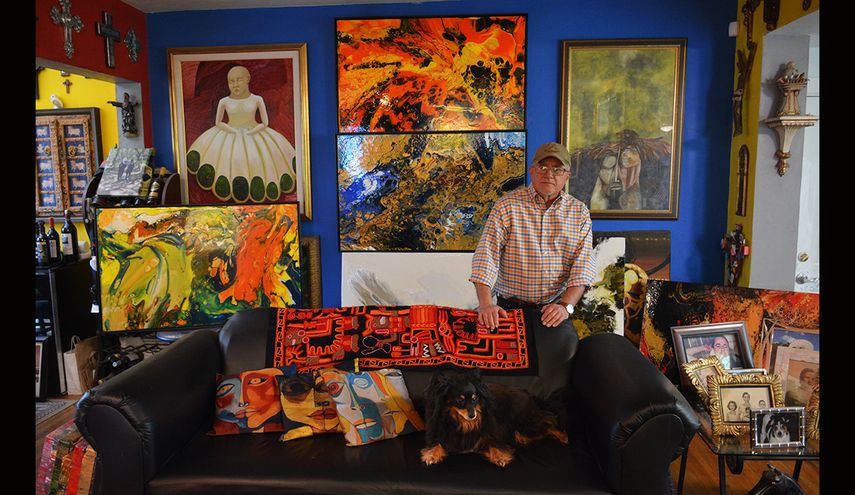MIAMI – Abstract painting, in all its forms, offers a deeply personal interpretation of the world around the artist — one expressed through shapes, colors, textures, and lines. Julio Taquechel merges these elements to create compositions that engage both appreciation and imagination.
The range of colors in Taquechel’s work is as varied as his forms — from subtle ochres and grays to luminous yellows and reds — all integrated through a distinctive technique that makes each painting unmistakably his own.
His art stems from fluid abstraction, a method in which liquid paints are layered and blended to produce intricate abstract designs. This technique allows him to achieve remarkable dimensions of fluidity, movement, and depth. On one side are the natural forces that govern the behavior of fluids. On the other, the artist’s vision and control, together evoke beauty and complexity in color and form, bridging abstraction and the natural environment.
-What is the art of abstraction for you?
Abstraction is creating art from colors and shapes, without the need for references. I base my work mostly on tones and textures, and the mood that defines composition or coloring. When I paint in bright colors, it’s because I feel good. When I use more ochre or subdued tones, it’s because I’m feeling low. Leonardo da Vinci said that to paint intensely, full of color and ideas, an artist must suffer.
-How is your creative process?
The fluid acrylic technique was first developed by the Mexican muralist David Alfaro Siqueiros in the 1930s, later explored by artists like Jackson Pollock. On a canvas, I mix acrylic paint, water, and silicone, using paintbrush and various tools until I reach the composition and luminosity I’m seeking. The beauty of this technique is that it yields unique, unrepeatable works. I can create something similar, but never identical.
Please, watch video of artist embed here.
-What inspires you the most to paint?
Landscapes inspire me. All my paintings represent the way I see landscapes — often imagined from above. For example, when I visited Nazca in Peru, I was fascinated by the different shades of the desert and reflected them in several pieces. I also found inspiration in Spain, on the Canary Islands, in the colors left on the ground by the La Palma volcano.
-Color and texture are essential components in your work. Do you try to balance them or does one take precedence?
I strive for balance, but I prioritize color. I’m passionate about colors. Color is life. If I had to summarize my work in only three words, I would say: “stylized color spots.”
-Your work is part of private collections and featured in exhibitions and auctions.
I’m fortunate to have my paintings in several private collections. Many people visit my home and are drawn to my work. Fellow artists have encouraged me to continue, which has helped me refine my technique over the years.
-Painting continues to evolve. Just as Realism defined the 19th century, Abstraction became a driving force of the 20th., and remains influential in the 21st. How do you view contemporary trends?
As an artist, I deeply respect the work of others. Every form of artistic creation is valid. Even if I don’t always connect with certain styles, I respect them because every artist deserves respect. Few people understand the emotional and physical effort behind each painting, the hours, the uncertainty, wondering if I would like the results.
-Your favorite piece?
The last one I made.
-Favorite genre?
Abstraction.
-Most admired painter of all time?
Those who are no longer with us. I greatly admire Amelia Peláez — and of course, Leonardo da Vinci, the greatest painter in the history of art.
-Your favorite abstract painter?
Jackson Pollock.
-Beloved colors?
In painting, I should say: gold and blue.
-Main shape or silhouette in your paintings?
I’m always amused when people tell me what they see in my paintings, a little plant here, a bird there. I enjoy the apparent anarchy of this technique, which only seems confusing, but it’s not. In the end, it’s the viewer who decides what’s there, according to their own viewpoint.
-Besides painting, what else do you enjoy?
Many things — traveling, visiting museums, and learning. I love plants and animals; my home is full of them, dogs, cats, chickens, and birds. I also love music, especially Italian popular songs like those of Mina, and Italian opera. I always paint while listening to classical music.
Instagram:
@taquechel_paintings




























